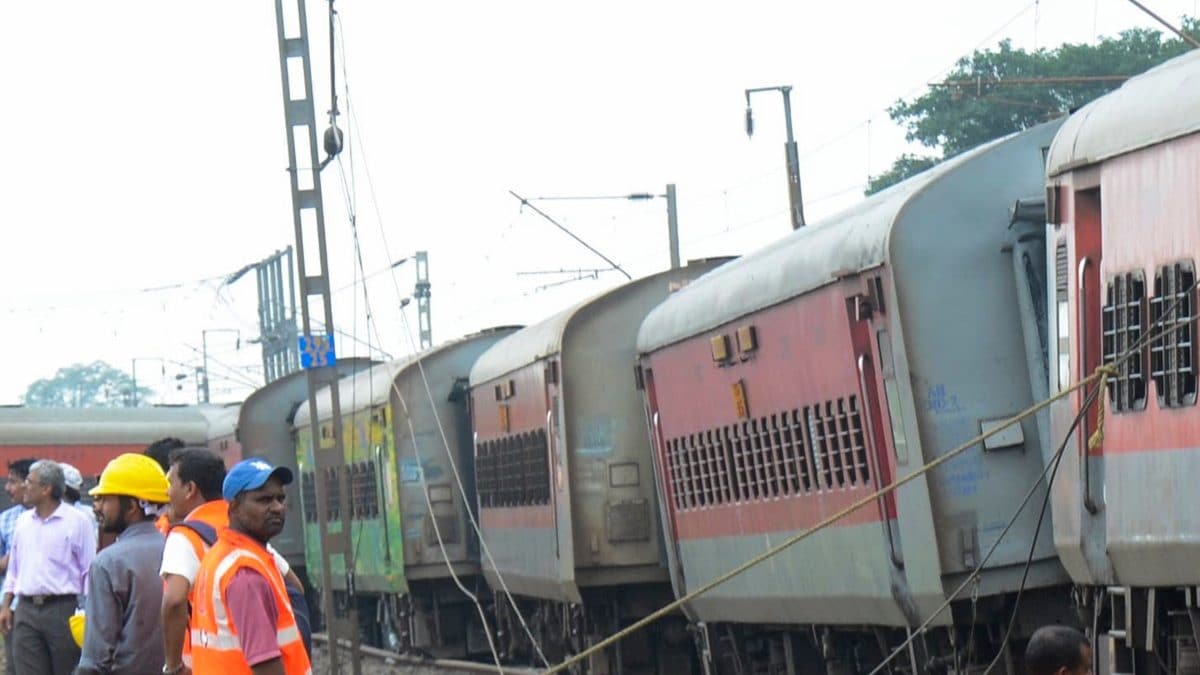The Mysuru-Darbhanga Bagmati Express train derailment near Chennai on Friday night was a harrowing event, leaving several passengers injured. Initial investigations by the National Investigation Agency (NIA) have ruled out any terrorist involvement or sabotage, pointing towards a technical error as the likely cause of the accident. While the incident serves as a stark reminder of the vulnerabilities of rail travel, the swift response of authorities and the lack of fatalities are encouraging signs. This article examines the circumstances surrounding the incident, the investigation, and its implications.
The Derailment and its Aftermath
The derailment occurred on the Chennai-Gudur section of the railway line, between Ponneri and Kavaraippettai stations, around 8:30 PM on Friday. The Mysuru-Darbhanga Bagmati Express (Train No. 12578) was en route from Mysuru to Darbhanga when it collided with a stationary goods train in the loop line. The impact caused the derailment of 12 coaches of the passenger train, leading to injuries for 19 passengers. Thankfully, no fatalities were reported, and the injured were promptly transported to nearby hospitals for medical attention.
Immediate Response and Diversions
Emergency response teams swiftly reached the accident site, initiating rescue and medical aid efforts. The incident disrupted train services, prompting diversions of other trains such as the Dhanbad-Alappuzha Express and the Jabalpur-Madurai Superfast Special Train. Restoration work began immediately at the accident site to reinstate normal railway operations.
Investigating the Cause: A Technical Error?
The NIA, known for its expertise in probing national security threats, immediately began a thorough investigation. The agency concluded that there was no evidence of any terror plot or sabotage related to the incident. The NIA, after analyzing all aspects of the derailment, suggested that the most likely cause of the accident was a technical failure or human error, potentially involving faulty signaling or miscommunication, which caused the passenger train to enter the loop line despite having a green signal for the main line.
Role of Signaling and Communications
The incident has underscored the critical importance of precise signaling and communication within the railway system. The fact that the passenger train received a green signal for the main line but mistakenly entered the loop line points towards a potential lapse in either signaling systems or communication protocols. Further investigation is necessary to ascertain the exact sequence of events leading to the derailment and pinpoint the specific failure points within the signaling and communication infrastructure.
The Human Element: Signal Disregard or Misinterpretation?
While technical errors cannot be discounted, it’s also crucial to consider human error as a potential contributor. The train driver may have misinterpreted signals or acted on a faulty signal, leading to the disastrous entry into the loop line. Factors like fatigue, lack of training, or environmental conditions might have influenced the driver’s actions.
Driver and Loco Pilot: A Focus on Their Role
The investigation must delve into the driver and loco pilot’s role in this accident. The train driver’s account of the incident, his experience level, and adherence to protocols require meticulous examination. Any underlying conditions affecting the driver’s perception or ability to react to signals will be critical areas of inquiry.
Lessons Learned and Prevention Measures
The incident emphasizes the critical importance of implementing robust safety procedures and ensuring rigorous maintenance and oversight of railway infrastructure, particularly signaling systems. This incident presents an opportunity to revisit safety protocols and implement enhancements that prioritize passenger safety.
Strengthening Infrastructure and Protocols
The focus must be on enhancing existing safety measures through thorough inspection and maintenance of track infrastructure, ensuring precise and reliable signal systems, and conducting periodic training exercises for drivers and railway staff. The government should prioritize allocating sufficient funds for railway modernization, safety upgrades, and rigorous training programs.
Takeaways
The derailment of the Mysuru-Darbhanga Bagmati Express, while a deeply unsettling event, has shed light on the importance of safety protocols and infrastructure. Here are some key takeaways:
- Importance of Safe Railway Infrastructure: Investing in reliable track, signal systems, and communication technologies is crucial for passenger safety.
- Human Factor in Accidents: Human errors are often contributors to railway accidents, making driver training and adherence to procedures critical.
- Investigative Approach: Thorough investigations, as conducted by the NIA, are essential to identify causes and implement preventative measures.
- Continuous Improvement: Railway safety is an ongoing process requiring vigilance, technological advancements, and a culture of safety.
This event serves as a powerful reminder of the need for sustained vigilance in maintaining railway safety. The incident also underlines the essential role of a proactive and responsive approach to identify potential vulnerabilities and to implement preventative measures to avert future incidents.




